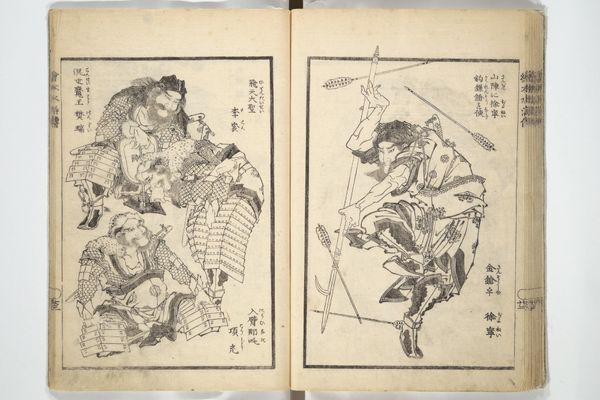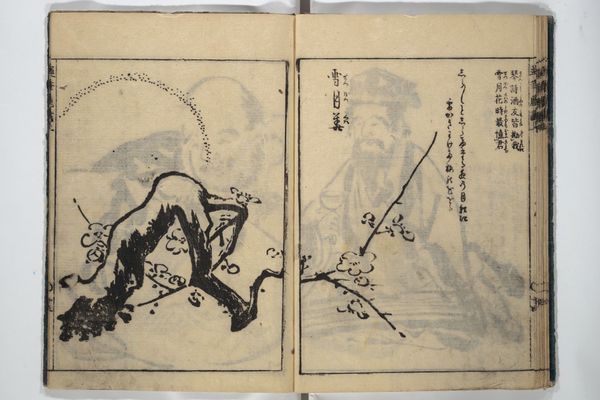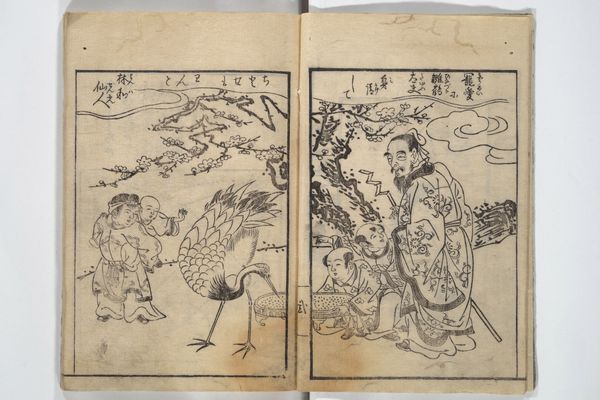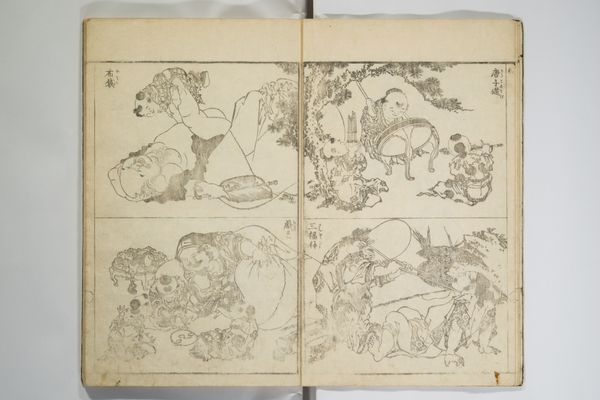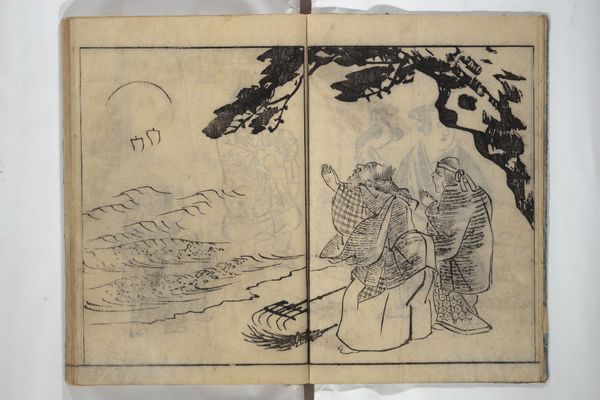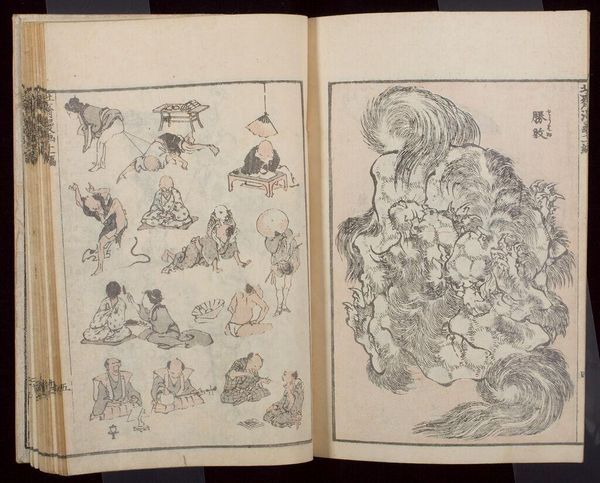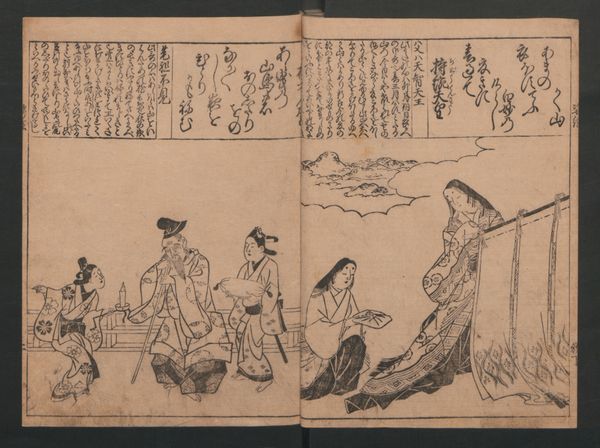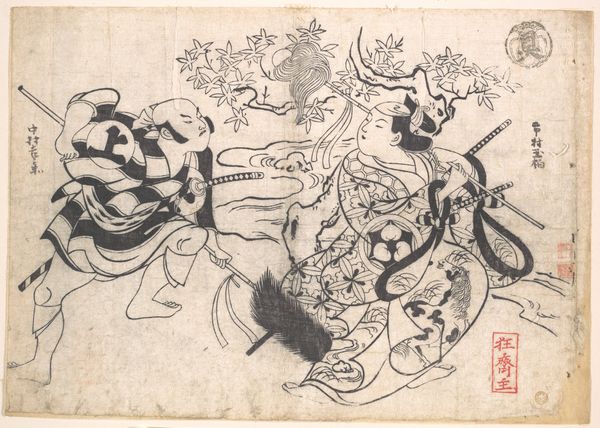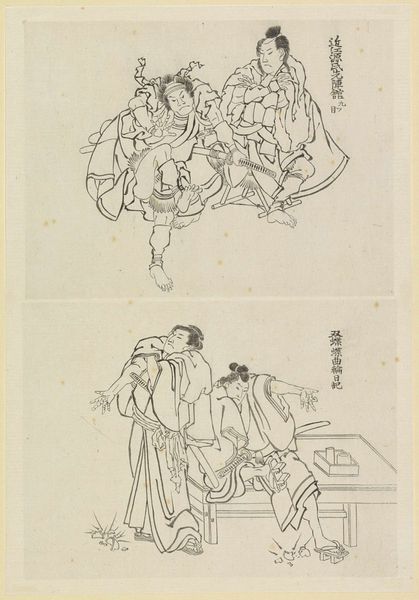
drawing, paper, ink
#
portrait
#
drawing
#
toned paper
#
narrative-art
#
ink painting
#
book
#
asian-art
#
landscape
#
ukiyo-e
#
figuration
#
paper
#
form
#
personal sketchbook
#
ink
#
horse
#
sketchbook drawing
#
history-painting
Dimensions: 9 13/16 × 6 7/8 in. (25 × 17.5 cm)
Copyright: Public Domain
Curator: Ogura Tōkei's "Tōkei Picture Album, Supplementary Series," dating back to 1809, is currently housed at the Metropolitan Museum of Art. It showcases drawings done in ink on toned paper, reflecting both portraiture and landscape traditions. Editor: My first impression is one of dynamic movement; the horses practically leap off the page. The sparse lines convey an impressive energy, creating a composition that is both grounded and ethereal. Curator: Absolutely, the artist uses simple tools – paper and ink – yet he achieves such dynamism. The sketchbook format points to artistic exploration and the material constraints influencing creative decisions. The accessibility of ink and paper democratized image making, making art accessible beyond courtly elites. Editor: The contrast is compelling – rough, textured strokes giving weight to the horses versus the light, almost ghostly lines defining the human figure. This duality introduces symbolic tension, questioning conventional forms of representation by disrupting our usual expectations about formal structures, foregrounding both substance and absence. Curator: The choice of subjects, horses and a figure likely drawn from history or legend, offers insight into contemporary values. Horses, for instance, were crucial in warfare and agriculture; examining how artists chose to portray them reveals ideological viewpoints and socio-economic narratives about class, power, and utility. Editor: Precisely. And even if we consider the formal rendering, it is also an insightful commentary on form, surface, and the play of light and shadow, highlighting the symbolic value attached to these artistic elements beyond their inherent technical functions, contributing to the piece’s emotional richness. Curator: Considering Tōkei's decision to record studies of horses, it prompts one to consider broader historical and material contexts, influencing both production and artistic interpretation by shifting from idealized representation toward observing animal form, technique, production, distribution – which fundamentally altered viewing culture throughout the time. Editor: True, and on balance the image offers insight into aesthetic choices that affect its symbolic meaning, challenging how viewers internalize imagery that’s more attuned toward feeling – something I now find quite engaging as the dialogue draws toward conclusion. Curator: Ultimately, appreciating this work deepens understanding of materials involved, processes involved and social issues – all central to interpreting cultural nuances revealed.
Comments
No comments
Be the first to comment and join the conversation on the ultimate creative platform.

